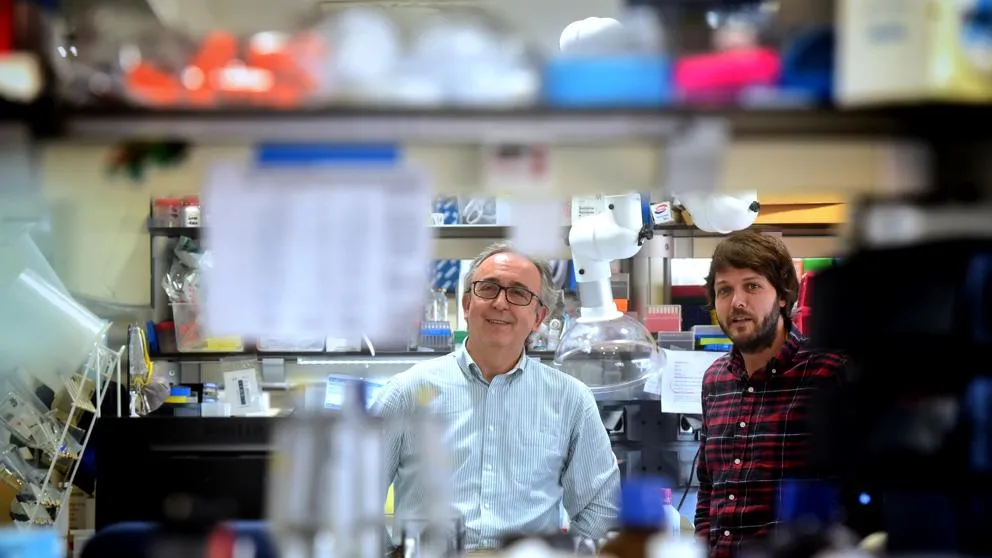Marce Cleret investigates how the energy balance of the human body is regulated.
In the center of the brain, in the small region of the hypothalamus on which basic functions depend such as temperature control, thirst, sleep or sex, there is a tiny group of neurons that are responsible for regulating hunger, weightbody and metabolism.They are the so -called Pomc (pro opiomelanocortina) neurons, which Marce Cleret has been studying for years to understand how the energy balance of the human body is regulated and why this balance is sometimes lost in diseases such as obesity.
But at the level of the cells, the energy balance is regulated by the mitochondria, some important organelles that are responsible - among other functions - to supply energy.Antonio Zorzano studies them, also for years, to understand their relationship with diseases such as - precisely - obesity and type 2 diabetes.
“With Antonio we know each other a long time ago and we think it would be interesting to combine these two perspectives because they are complementary.On the one hand, the regulation of the body's energy balance at the brain level and, on the other, the mitochondrial dynamics at the cell level, ”explains Marc Claret."Thus we could better understand the molecular mechanisms by which neurons regulate biological processes."The results of his research, presented last June in Cell Metabolism magazine, have shown that POMC neurons are involved in type 2 diabetes and have revealed a communication route until now unknown between the brain and the pancreas.
What was the initial hypothesis?
A.Z.We knew that, when the amount of energy available to the cells changes, they adapt modifying the shape of their mitochondria.It is a phenomenon that we call mitochondrial dynamics.We thought that the alterations of metabolism in the whole organism could be related to defects in the mitochondrial dynamics of Pomc neurons.
How did they verify it?
M.C.We use a technique that allows you to inactivate genes specifically in this group of neurons.We have done experiments with mice inactivating three different genes related to mitochondrial dynamics.Specifically, the genes of the MFN1, the MFN2 and the OPA1.
And what happened?
M.C.The first thing we saw is that, when we disrupt the mitochondrial dynamics of Pomc neurons, mice stop correctly detecting the blood glucose level.It is an effect that shows in particular when they eat after being fasting.They become unable to adapt to the increase in blood glucose.
A.Z.So far it is not surprising because we already knew that Pomc neurons regulate glucose metabolism.But what we saw later did not expect it.
What did you see?
A.Z.That, when the mitochondrial dynamics in these neurons fail, the beta cells of the pancreas lose their ability to segregate insulin to respond to the increase of glucose.Therefore, the brain communicates with the pancreas.This connection between the two was unknown.
M.C.We also saw that, in Pomc neurons, a disproportionate amount of free radicals appears.But that, if we administer antioxidants in the brain and reduce free radicals, then the pancreas recovers the ability to segregate insulin.
Do these results have any utility for people with diabetes or other metabolic diseases?
M.C.The shape of the mitochondria changes depending on the metabolic status of a person.We know that, when a fat -rich diet is ingested, the expression of proteins essential for mitochondrial dynamics is reduced.These proteins are the same as we have eliminated in the experiments with mice.And we have seen that when we depriveTo the cells of these proteins, mice are more likely to develop diabetes and obesity.
Can these proteins be restored to prevent or treat diabetes?
M.C.Not at this time.But it would be interesting to look for compounds capable of restoring these necessary molecules so that cells have a good mitochondrial dynamic.
A.Z.These compounds could be useful not only for diabetes, but for a wide set of diseases that may be related to mitochondrial dynamics.
What diseases do you think?
A.Z.Obesity and metabolic syndrome are the most obvious.But we also have evidence that there is a relationship between mitochondrial dynamics and liver cancer.Possibly also hay with neurodegenerative diseases, and in many others that we have not yet studied.The relationship between mitochondria and the rest of the cell is an essential and little known part of the biology in which we will see great advances in the coming years.


